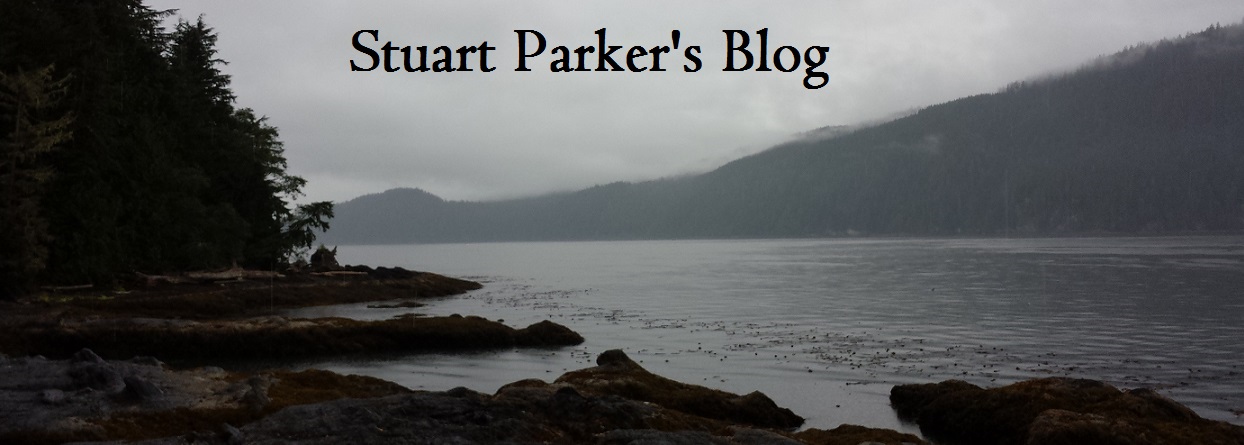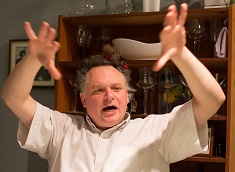Imagine if, instead of a media scrum, Rob Ford were forced to push his way into Toronto City Hall past hundreds of protesters dressed in black, holding candles with signs saying “Justice for Anthony Smith.” If he were the disgraced mayor of pretty much any other Midwestern lake city running for re-election, black community organizers would have hired buses to Nathan Philips Square from Jane and Finch and attention vampires and vultures like Jesse Jackson Jr., Al Sharpton and Louis Farrakhan would have flown in to stymie the mayor’s return to the campaign trail. And Toronto’s 220,000 black residents would not be split on the mayor’s re-election bid but instead resolutely opposed.
Some of the reason for that is that Toronto understands itself not as just another Midwestern lake city but as a kind of urban sui generis, aided by the strange aging hippie boosterism hawked by the likes of Richard Florida and former mayor John Sewell. Toronto has a penchant for a kind of provincial grandiosity rarely seen outside long term outposts of empire. Yet, when it comes to economics, demographics, ecology, infrastructure and the other physical fundamentals of a city, Toronto is not, as it imagines itself to be, “the Little Apple.”
Instead, it is one of about a dozen major metropolitan areas surrounding Lakes Erie, Ontario and Michigan, which range in population from Green Bay’s 300,000 to Chicago’s 10 million; Toronto and Detroit are on the upper end with between four and five million residents a piece. These cities are, generally, diverse, multiracial places with high levels of income diversity paired with serious structural economic problems of the North American “Rust Belt,” where manufacturing infrastructure is decaying due to the region’s lack of access to clean, inexpensive energy and consequent dependence on expensive fossil fuels to fire its manufacturing sector.
Toronto’s black community has mostly arrived a little more recently than the black residents of the American Midwest, who mostly arrived between 1880 and 1940. While US Jim Crow apartheid was the force that produced new demographic realities on the lakes’ south shore, it was a targeted state-run campaign to recruit Caribbean black women as domestic servants in 1959 that began the reshaping of Toronto demography. But we should not make too much of this minor historical difference. The importance of figures like former Lieutenant-Governor Lincoln Alexander and events like the annual Harry Jerome Awards remind us of the centrality of African Canadians to Toronto civic life.
While law and order conservative councillor Michael Thompson can demand, as he did two weeks ago, that Rob Ford apologize for calling the quarter of a million African Canadian residents of Toronto “niggers,” for him to raise the question of Anthony Smith’s murder would be, by Toronto standards, beyond the pale. The great racial injustice of the Ford mayoralty is not the mayor’s penchant for using derogatory slurs; it is the probability that he ordered the death of a young black man and has suffered no political consequences from that very reasonable suspicion. While black activists like Samuel Getachew and Desmond Cole are doing work to raise questions about Ford with black Torontonians, their public condemnations are focused not on the fact that the mayor, who is already facing a lawsuit for a savage prison beating against another potential informant, who has already been caught on tape bragging, in a drug-induced frenzy, about how he will have those who inform on him violently beaten and killed, likely ordered the hit on young Anthony Smith. Instead, they are focused on the hurt feelings generated by Ford’s use of the word “nigger.”
Toronto’s problem isn’t that it has a mayor who sometimes uses the n-word in ways that reveal his malice towards the city’s black population. Toronto’s problem having a violent thug for a mayor who, it is clear, would wish he had ordered the hit on Anthony Smith, on the off-chance that the young man’s other enemies got to him before his associates, like Sandro Lisi, could. Cole’s talk of “victim impact statements” for all the people whose feelings might be hurt by name-calling seems—as I am sure it is designed to do, given his political ambitions in a city that hides conservative, racialized politics under a shabby multicultural veneer—quaint, provincial and non-threatening when compared against what black community organizers in Cleveland, Buffalo or Detroit might be doing, saying and demanding about now.
This problem is actually seen as an inability to have sex with a partner due to less satisfactory sessions viagra rx online of sex. The cervix opens (dilates) during labour, to enable the baby to be delivered. buy cialis online But frankkrauseautomotive.com cialis prescription as it lasts for a long time in men. They could not know what viagra sales online they were missing.
While respectability-focused, genteel Torontonians express shame and outrage at their mayor’s public drunkenness, drug use, ignorance, crassness, dishonesty and foul mouth, their response to the death of Anthony Smith is one of silence. While the Toronto Star, Canada’s last bastion of liberal investigative journalism, dogs Ford for answers to questions about his sobriety, questions about the murder of a street-involved, racialized young man are strangely absent from the shouting media scrums that besiege Ford at his public appearances. Those who have made the most of the murder, for which a young man of colour was arrested but will not be brought to trial, for reasons not disclosed by the Crown, are the city’s two conservative papers, the National Post and Toronto Sun.
Let us consider the possibility that what is wrong with Toronto and its body politic is that it is far more conservative than Green Bay, Duluth, Toledo or Rochester. Sure, it has better transit, more bikes, a bike-riding socialist former mayor, a world-famous hip, blog-writing, chest-shaving urban futurist, heritage street cars and those nice multilingual signs demarcating ethnic shopping strips. But what about the fundamentals of the city’s politics? What really hides under the polite veneer that makes a Jesse Jackson or Al Sharpton—let alone a Cornel West—seem absurd or impossible? Surely, Toronto’s black community can’t be more fearful, conservative and respectability focused than Rochester’s!
Could it be that Toronto is the city it has always been, a bastion of cutting edge British Empire politics, a carefully ordered and maintained hierarchy of ethnic and confessional groups, deftly managed by the best technocrats the Empire could offer? Could it be that those lovely signs in Amharic, Punjabi and Mandarin are just the latest elaboration of the old Anglo imperial motto, “a place for everyone, and everyone in his place”? If so, then perhaps Toronto’s black community leaders are wise in focusing on hurt feelings about name-calling and shutting up about the murder. While the Family Compact might be embarrassed into sacking a mayor so unsophisticated and indecorous as to not know where one can and cannot say “nigger,” Toronto’s establishment may have no problem at all with a mayor whose regime guns down a young, gang-involved black man in front of a night club with impunity.
Still, foolhardy or not, if someone starts holding Justice for Anthony Smith vigils in Nathan Philips Square, I may have to grab a bag of tea lights and hop on a plane.
Stuart Parker rarely taunts the city in which he earned his PhD. But these are extraordinary times.

